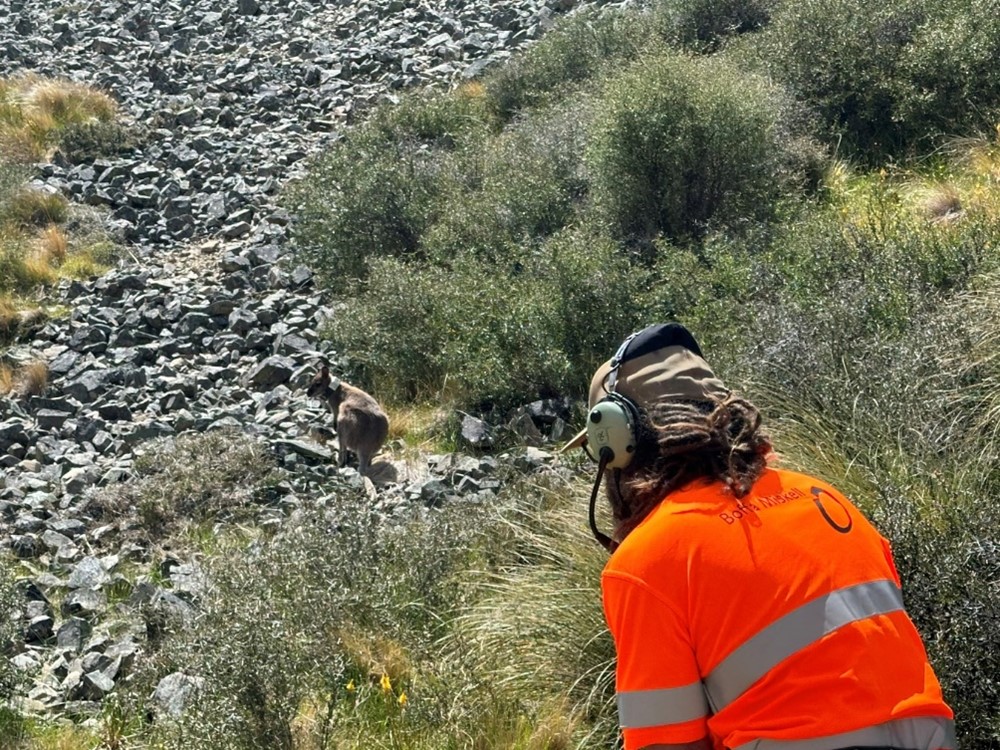Over the next 12 months, these ‘seeker’ wallaby will be monitored by a hunting team to see if they lead the hunters to other wallabies. Those other wallabies will then be shot, leaving the seeker wallaby to continue to seek out more wallabies until no more individuals can be found.


Using ‘seeker’ animals as a method of pest control is common in feral goat and tahr control. If the technique can be used successfully for wallaby, which are moderately gregarious, it could make a significant difference to efforts to eradicate Bennett’s wallaby from Otago and South Canterbury, particularly in areas where we have very low wallaby numbers.
ORC’s Project Delivery Specialist - National Programmes, Gavin Udy said the Otago Regional Council in collaboration with Environment Canterbury and the Tipu Mātoro National Wallaby Eradication Programme hoped the 2-year research programme testing the usefulness of seeker wallaby would provide a new tool in the battle against this fast-breeding pest.
“Tipu Mātoro’s research programme is all about improving existing wallaby detection, surveillance, and control methods, and finding new ones to address the pest wallaby problem,“ says Mr Udy.
“Finding wallabies across large landscapes and difficult terrain where there are few present, is labour intensive. Any wallabies that go undetected allow small breeding populations to form and grow and become established over time. This is why it is critical that we develop new cost-effective tools to find wallabies in these environments.”

Project Manager Brent Barrett (Boffa Miskell) releases the collared wallaby
ORC is investing $110,000 over two years in the field work component of this research, the potential benefits of which will far exceed the costs of the level of investment made in terms of protecting Otago from wallaby spread and the damage they do to native bush, farms, crops, commercial forestry, and our biodiversity.
As part of the partnership the Tipu Mātoro National Wallaby Eradication Programme is contributing an additional $100,000, while another programme partner, Environment Canterbury, is supporting the research through landowner consultation, DNA sampling and supplementary control work.
The research is being conducted under approved permits from the Ministry for Primary Industries (MPI) and the Animal Ethics Committee of Lincoln University, and permission granted by landowners to release the wallaby.
There has been an increase of reported wallaby sightings in the past year which is good news, and people are asked to keep an eye out and report wallaby sightings, dead or alive, and wallaby kills; as the more eyes on the ground the better to prevent wallabies becoming established in Otago.
The public are asked to report a sighting here: reportwallabies.nz
Why are wallaby considered a pest? https://www.orc.govt.nz/managing-our-environment/pest-hub/animals/bennett-s-wallaby
